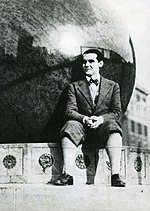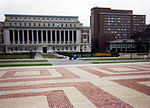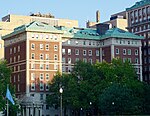Rare Book & Manuscript Library

The Rare Book & Manuscript Library is principal repository for special collections of Columbia University. Located in New York City on the university's Morningside Heights campus, its collections span more than 4,000 years, from early Mesopotamia to the present day, and span a variety of formats: cuneiform tablets, papyri, and ostraca, medieval and Renaissance manuscripts, early printed books, works of art, posters, photographs, realia (such as mathematical instruments and theater models), sound and moving image recordings, and born-digital archives. Areas of collecting emphasis include American history, Russian and East European émigré history and culture, Columbia University history, comics and cartoons, philanthropy and social reform, the history of mathematics, human rights advocacy, Hebraica and Judaica, Latino arts and activism, literature and publishing, medieval and Renaissance manuscripts, oral history, performing arts, and printing history and the book arts.
Excerpt from the Wikipedia article Rare Book & Manuscript Library (License: CC BY-SA 3.0, Authors, Images).Rare Book & Manuscript Library
West 114th Street, New York Manhattan
Geographical coordinates (GPS) Address Nearby Places Show on map
Geographical coordinates (GPS)
| Latitude | Longitude |
|---|---|
| N 40.8064 ° | E -73.9631 ° |
Address
Butler Library
West 114th Street 535
10027 New York, Manhattan
New York, United States
Open on Google Maps








